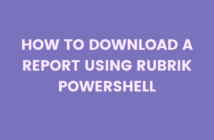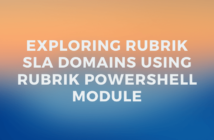Welcome to the 5th part of the 6 series guide on Installing Exchange Server 2010. This part deals with preparing your Active Directory Environment for Exchange Server 2010.
Before deploying Exchange Server 2010, there are several steps that need to be performed otherwise there will be problems with installing exchange successfully.
Performing an Active Directory Health Check
This is a must step to perform if you are not deploying Active Directory from scratch. Since Exchange Server relies heavily on Active Directory, an extensive health check is required .
Tools like DCDIAG, netdiag and replication monitoring can help in identifying the underlying problems related to the installation and performance of the Exchange Server.
Granting the Appropriate Permissions
To install Exchange Server 2010, you must make sure the domain account you will be using is a member of the following groups: Domain Admins, Enterprise Admins, and Schema Admins.
Installing the Base Operating System on Your Exchange Server
Exchange Server 2010 can be installed only on a 64-bit version of the Windows Server 2008 Operating System. Although either Standard or Enterprise can be used, the Enterprise version is required for some of the more advanced Exchange Server features.
Also make sure that you set static IP addresses for the machines that you are installing Exchange on.
Installing the Prerequisites
In order for Exchange to run successfully, there are some software application that should be installed before you can run the Exchange Installation Wizard.
- Installing the 2007 Office System Converter: Microsoft Filter Pack
This tool is required to be installed only on the Exchange servers that host the Mailbox Server Roles. In our case, we will be having two Exchange Servers, one of them will host the Client Access Role and Hub Transport Role and we will call it ED-EX2K10-CAH, the other server will host only the Mailbox Server Role, which we will call ED-EX2K10-MB1. The tool that you download from the above link will be installed only on the second server.
Additionally you might have to download the Microsoft Office 2010 Filter pack from here.
- Installing the Active Directory Services Remote Management Tools
Installing the Remote Management Tools on the Exchange Server will help us perform the Schema Prep and Domain Prep commands from the Exchange Server.
This can be by opening a Powershell window with administrative rights. Run the below commands to install RSAT on the server. You need to make sure that you have mounted the ISO copy of the Exchange Server and are in the directory where the ISO is mounted.
cd D:\
Import-Module ServerManager
Add-WindowsFeature RSAT-ADDS
After it completes installing, the server needs to be rebooted for the changes to take effect.
Preparing the Active Directory Forest, Domain, and Exchange Organization
The following steps need to be performed from the Powershell before you can launch the Exchange Installation Wizard. You need to be in the directory where the Exchange ISO copy is mounted.
cd D:\
.\setup /prepareschema [Enter]
.\setup /prepareAD /OrganizationName:EnterpriseDaddy [Enter]
.\setup /PrepareDomain [Enter]
Installing Additional Required Operating System Components
There are certain other software applications and prerequisites that are required before we can go ahead with the installation. You can check that here.
Meanwhile, follow the steps shown below to complete the last step.
Open Windows Powershell in Administrative Mode on the server ED-EX2K10-CAH.
Import-Module ServerManager
Add-WindowsFeature NET-Framework,RSAT-ADDS,Web-Server,Web-Basic-Auth,Web-Windows-Auth,Web-Metabase,Web-Net-Ext,Web-Lgcy-Mgmt-Console,WAS-Process-Model,RSAT-Web-Server,Web-ISAPI-Ext,Web-Digest-Auth,Web-Dyn-Compression,NET-HTTP-Activation,Web-Asp-Net,Web-Client-Auth,Web-Dir-Browsing,Web-Http-Errors,Web-Http-Logging,Web-Http-Redirect,Web-Http-Tracing,Web-ISAPI-Filter,Web-Request-Monitor,Web-Static-Content,Web-WMI,RPC-Over-HTTP-Proxy -Restart
On the mailbox server, ED-EX2K10-MB1, open Powershell with Administrative privileges.
Import-Module ServerManager
Add-WindowsFeature NET-Framework,RSAT-ADDS,Web-Server,Web-Basic-Auth,Web-Windows-Auth,Web-Metabase,Web-Net-Ext,Web-Lgcy-Mgmt-Console,WAS-Process-Model,RSAT-Web-Server -Restart
The -Restart parameter given at the end will make sure that the server does not reboot in between the installtions of the features and only reboots once everything is installed.
That's it! We have completed the prerequisites and will move on with installing the Exchange Server finally in the next post.



